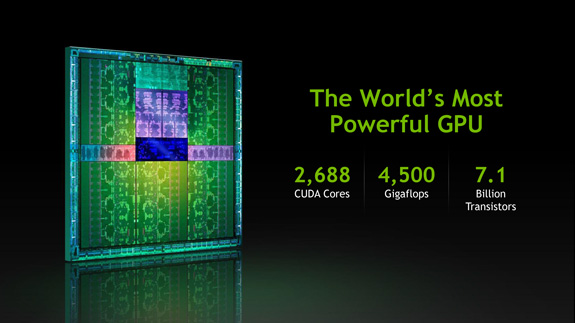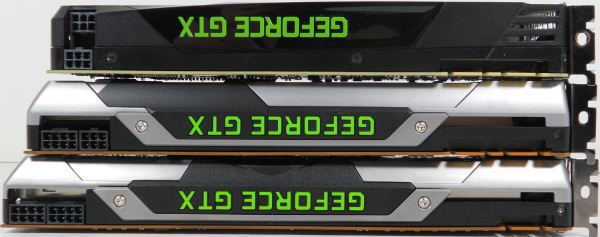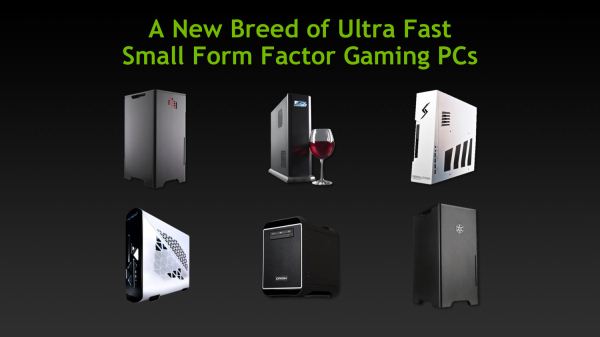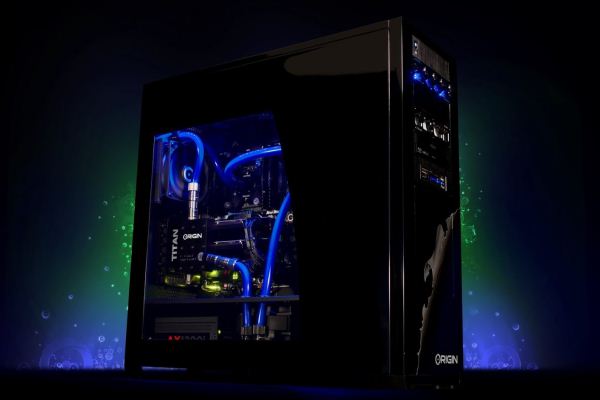NVIDIA's GeForce GTX Titan, Part 1: Titan For Gaming, Titan For Compute
by Ryan Smith on February 19, 2013 9:01 AM ESTWho’s Titan For, Anyhow?
Having established performance expectations, let’s talk about where Titan fits into NVIDIA’s product stack. First and foremost, though Titan is most certainly geared in part as a gaming video card (and that’s largely how we’ll be looking at it), that’s not the only role it serves. Titan is also going to be NVIDIA’s entry-level compute card. We’ll dive more into why that is in a bit in our feature breakdown, but the biggest factor is that for the first time on any consumer-level NVIDIA card, double precision (FP64) performance is uncapped. That means 1/3 FP32 performance, or roughly 1.3TFLOPS theoretical FP64 performance. NVIDIA has taken other liberties to keep from this being treated as a cheap Tesla K20, but for lighter workloads it should fit the bill.
As compared to the server and high-end workstation market that Tesla carves out, NVIDIA will be targeting the compute side of Titan towards researchers, engineers, developers, and others who need access to (relatively) cheap FP64 performance, and don’t need the scalability or reliability that Tesla brings. To that end Titan essentially stands alone in NVIDIA’s product stack; the next thing next to a FP64-constrained consumer card is the much more expensive Tesla K20.

Far more complex will be the gaming situation. Titan will not be pushing anything down in NVIDIA’s product stack, rather NVIDIA’s product stack will be growing up to accompany Titan. Like the GTX 690, NVIDIA is going to position Titan as a premium/luxury product, releasing it at the same $999 price point. GTX 690 itself will continue to exist at the same $999 price point, meanwhile GTX 680 will continue at its current price point of roughly $450.
Continuing the GTX 690 analogies, Titan will not only be sharing in GTX 690’s price point, but also in its design principles and distribution. This means Titan is a well-built card with its housing composed primarily of metals, with the same kind of luxury finish as the GTX 690. On the distribution side of things Asus and EVGA are once again NVIDIA’s exclusive partners for North America, and they will essentially be distributing reference Titan cards. In time we will see some specialized variation, with water-cooling in particular being an obvious route for EVGA to go. Factory overclocks are also on the table.
With the above in mind, it goes without saying that while GTX 690 had some historical precedence in its price, the same cannot be said for Titan. The price of NVIDIA’s top-tier single-GPU video cards hovered around $500 for the GeForce 400/500 series, and while they attempted to launch at $650 for the GTX 280, the launch of the Radeon HD 4870 quickly brought that price down to earth. As such this will be the most expensive single-GPU product out of NVIDIA yet.

Top To Bottom: GTX 680, GTX Titan, GTX 690
Ultimately NVIDIA is not even going to try to compete on a price-performance basis with Titan. There are a number of potential reasons for this – ranging from the competitive landscape to yields to needs for GK110 GPUs elsewhere within NVIDIA – and all of those reasons are probably true to some extent. Regardless, NVIDIA believes that like the GTX 690 they can sell Titan as a luxury product, and hence $999. The GTX 680 and below will compose NVIDIA’s more traditional price-performance competitive fare.
As to be expected from such a price, NVIDIA’s marketing department will be handling Titan in a similar fashion as they did GTX 690. This not only includes reiterating the fact that Titan is intended to be a luxury product, but also focusing on markets where luxury products are accepted, and where Titan in particular makes sense.
Perhaps not surprisingly, with $999 video cards the makeup of consumers shifts away from both traditional big-box OEMs and DIY builders, and towards boutique builders. Boutique builders are essentially already in the business of providing luxury computers, offering an outlet for luxury buyers who need not spend their time building their own computer, and want something of higher quality than what the typical OEM provides. As such while Titan will be sold on the open market just as like any other card, NVIDIA tells us that they expect a lot of those buyers are going to be the boutiques.
For Titan in particular, NVIDIA is going to be focusing on two boutique computer concepts, reflecting the blower design of Titan as opposed to the front/back exhausting design of the GTX 690. The first concept will be SFF PCs, where blowers are a necessity due to a lack of space (and often, a lack of heavy sound dampening), and where such cards can draw fresh air in from outside the chassis.
On the other end of the spectrum will be the ultra-enthusiast market where one Titan isn’t enough, and even two may come up short. Again thanks to the fact that it’s a blower, Titan can easily be fit in an ATX motherboard for tri-SLI operation, which NVIDIA envisions not just as the ultimate gaming computer, but the ultimate NV/3D Surround computer in particular. Multi-monitor gaming with graphically intensive games can quickly nullify the performance of even a single Titan card, so tri-SLI is NVIDIA’s solution to driving three monitors as well as one Titan can drive one monitor. At the same time however, NVIDIA intends to showcase that a tri-SLI system doesn’t need to be loud, despite the cramped conditions and despite the 750W+ that 3 Titans will pull, thanks to the high quality construction of the cards. Tri-SLI has been possible for a number of years, but NVIDIA believes with Titan in particular they have a solid grip on the heat and noise concerns it typically comes with.
To that end, as part of the Titan launch NVIDIA has shipped out a number of boutique systems in either a SFF or tri-SLI full tower configuration to reviewers, in order to show off their usage concepts in completed and well-constructed systems. Anand received a SFF Tiki from Falcon Northwest, while I have received a tri-SLI equipped Genesis from Origin PC. Like Titan itself we can’t talk about the performance of these systems, but we’ll be able to go into greater detail on Thursday when the complete NDA lifts. In the meantime we’ve been able to post a few impressions, which we’ve put up on their respective articles.
Moving on, with a $999 launch price NVIDIA’s competition will be rather limited. The GTX 690 is essentially a companion product; NVIDIA’s customers can either get the most powerful single-GPU card NVIDIA offers in a blower design, or an alternative design composed of two lesser GPUs in SLI, in a front and rear exhausting design. The GTX 690 will be the faster card, but at a higher TDP and with the general drawbacks of SLI. On the other hand Titan will be the more consistent card, the lower TDP card, the easier to cool card, but also the slower card. Meanwhile though it’s not a singular product, the GTX 680 SLI will also be another option, offering higher performance, higher TDP, more noise, and a cheaper price tag of around $900.
As for AMD, with their fastest single-GPU video card being the 7970 GHz Edition, offering performance closer to the GTX 680 than Titan, Titan essentially sits in a class of its own on the single-GPU front. AMD’s competition for Titan will be the 7970GE in CrossFire, and then the officially unofficial 7990 family, composed of the air-cooled PowerColor 7990, and the closed loop water-cooled Asus Ares II. But with NVIDIA keeping GTX 690 around, these are probably closer competitors to the multi-GPU 690 than they are the single-GPU Titan.
Finally, let’s talk launch availability. By scheduling the launch of Titan during the Chinese New Year, NVIDIA has essentially guaranteed this is a delayed availability product. Widespread availability is expected on the 25th, though cards may start popping up a couple of days earlier. NVIDIA hasn’t gone into depth for launch quantities, but they did specifically shoot down the 10,000 card rumor; this won’t be a limited run product and we don’t have any reason at this time to believe this will be much different from the GTX 690’s launch (tight at first, but available and increasingly plentiful).
| February 2013 GPU Pricing Comparison | |||||
| AMD | Price | NVIDIA | |||
| $1000 | GeForce GTX Titan/690 | ||||
| (Unofficial) Radeon HD 7990 | $900 | ||||
| Radeon HD 7970 GHz Edition | $450 | GeForce GTX 680 | |||
| Radeon HD 7970 | $390 | ||||
| $350 | GeForce GTX 670 | ||||
| Radeon HD 7950 | $300 | ||||












157 Comments
View All Comments
Wolfpup - Tuesday, February 19, 2013 - link
I think so too. And IMO this makes sense...no one NEEDS this card, the GTX 680 is still awesome, and still competitive where it is. They can be selling these elsewhere for more, etc.Now, who wants to buy me 3 of them to run Folding @ Home on :-D
IanCutress - Tuesday, February 19, 2013 - link
Doing some heavy compute, this card could pay for itself in a couple of weeks over a 680 or two. On the business side, it all comes down to 'does it make a difference to throughput', and if you can quantify that and cost it up, then it'll make sense. Gaming, well that's up to you. Folding... I wonder if the code needs tweaking a little.wreckeysroll - Tuesday, February 19, 2013 - link
Price is going to kill this card. See the powerpoints in the previews for performance. Titan is not too much faster than what they have on the market now, so not just the same price as a 690 but 30% slower as well.Game customers are not pro customers.
This card could of been nice before someone slipped a gear at nvidia and thought gamers would eat this $1000 rip-off. A few will like anything not many though. Big error was made here on pricing this for $1000. A sane price would of sold many more than this lunacy.
Nvidia dropped the ball.
johnthacker - Tuesday, February 19, 2013 - link
People doing compute will eat this up, though. I went to NVIDIA's GPU Tech Conference last year, people were clamoring for a GK110 based consumer card for compute, after hearing that Dynamic Paralleism and HyperQ were limited to the GK110 and not on the GK104.They will sell as many as they want to people doing compute, and won't care at all if they aren't selling them to gamers, since they'll be making more profit anyway.
Nvidia didn't drop the ball, it's that they're playing a different game than you think.
TheJian - Wednesday, February 20, 2013 - link
Want to place bet on them being out of stock on the day their on sale? I'd be shocked if you can get one in a day if not a week.I thought the $500 Nexus 10 would slow some down but I had to fight for hours to get one bought and sold out in most places in under an hour. I believe most overpriced apple products have the same problem.
They are not trying to sell this to the middle class ya know.
Asus prices the ares 2 at $1600. They only made 1000 last I checked. These are not going to sell 10 million and selling for anything less would just mean less money, and problems meeting production. You price your product at what you think the market will bare. Not what Wreckeysroll thinks the price should be. Performance like a dualchip card is quite a feat of engineering. Note the Ares2 uses like ~475watts. This will come in around 250w. Again, quite a feat. That's around ~100 less than a 690 also.
Don't forget this is a card that is $2500 of compute power. Even Amazon had to buy 10000 K20's just to get a $1500 price on them, and had to also buy $500 insurance for each one to get that deal. You think Amazon is a bunch of idiots? This is a card that fixes 600 series weakness and adds substantial performance to boot. It would be lunacy to sell it for under $1000. If we could all afford it they'd make nothing and be out of stock in .5 seconds...LOL
chizow - Friday, February 22, 2013 - link
Except they have been selling this *SAME* class of card for much <$1000 for the better part of a decade. *SAME* size, same relative performance, same cost to produce. Where have you been and why do you think it's now OK to sell it for 2x as much when nothing about it justifies the price increase?CeriseCogburn - Sunday, February 24, 2013 - link
LOL same cost to produce....You're insane.
Gastec - Wednesday, February 27, 2013 - link
You forget about the "bragging rights" factor. Perhaps Nvidia won't make many GTX Titan but all those they do make will definitely sell like warm bread. There are enough "enthusiasts" and other kinds of trolls out there (most of them in United States) willing to give anything to show to the Internet their high scores in various benchmarks and/or post a flashy picture with their shiny "rig".herzwoig - Tuesday, February 19, 2013 - link
Unacceptable price.Less than promised performance.
Pro customers will get a Tesla, that is what those cards are for with the attenuate support and drivers. Nvidia is selling this as a consumer gaming play card and trying to reshape the high end gaming SKU as an even more premium product (doubly so!!)
Terrible value and whatever performance it has going for it is erroded by the nonsensical pricing strategy. Surprising level of miscalculation on the greed front from nvidia...
TheJian - Wednesday, February 20, 2013 - link
They'll pay $2500 to get that unless they buy 10000 like amazon (which still paid $2000/card). Unacceptable for you, but I guess you're not their target market. You can get TWO of these for the price of ONE tesla at $2000 and ONLY if you buy 10000 like amazon. Heck if buying one Tesla, I get two of these, a new I7-3770K+ a board...LOL. They're selling this as a consumer card with telsa performance (sans support/insurance). Sounds like they priced it right in line with nearly every other top of the line card released for years in this range. 7990, 690 etc...on down the line.Less than promised performance? So you've benchmarked it then?
"Terrible value and whatever performance it has going for it"
So you haven't any idea yet right?...Considering a 7990 costs a $1000 too basically, and uses 475w vs. 250w, while being 1/2 the size this isn't so nonsensical. This card shouldn't heat up your room either. There are many benefits, you just can't see beyond those AMD goggles you've got on.